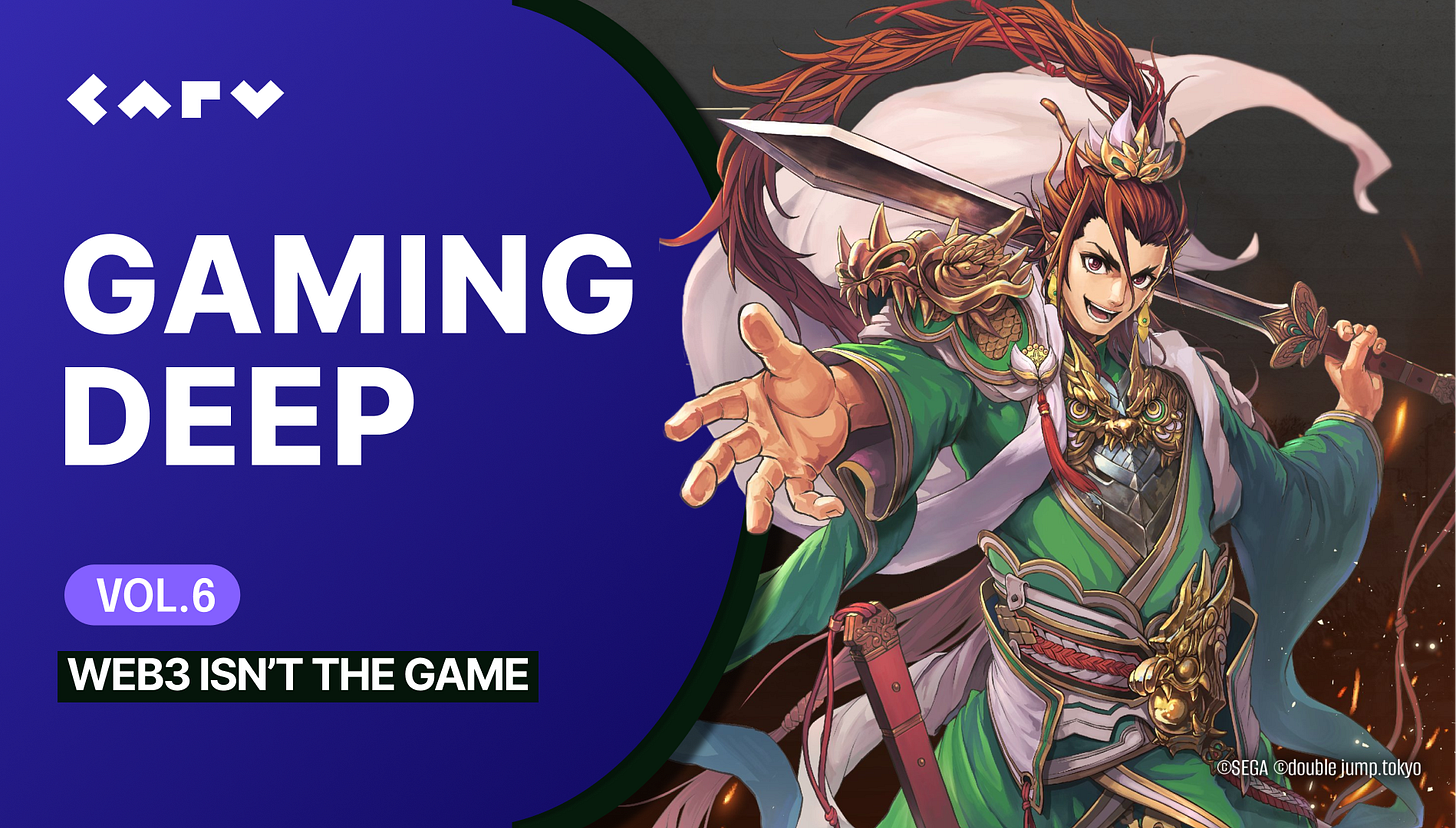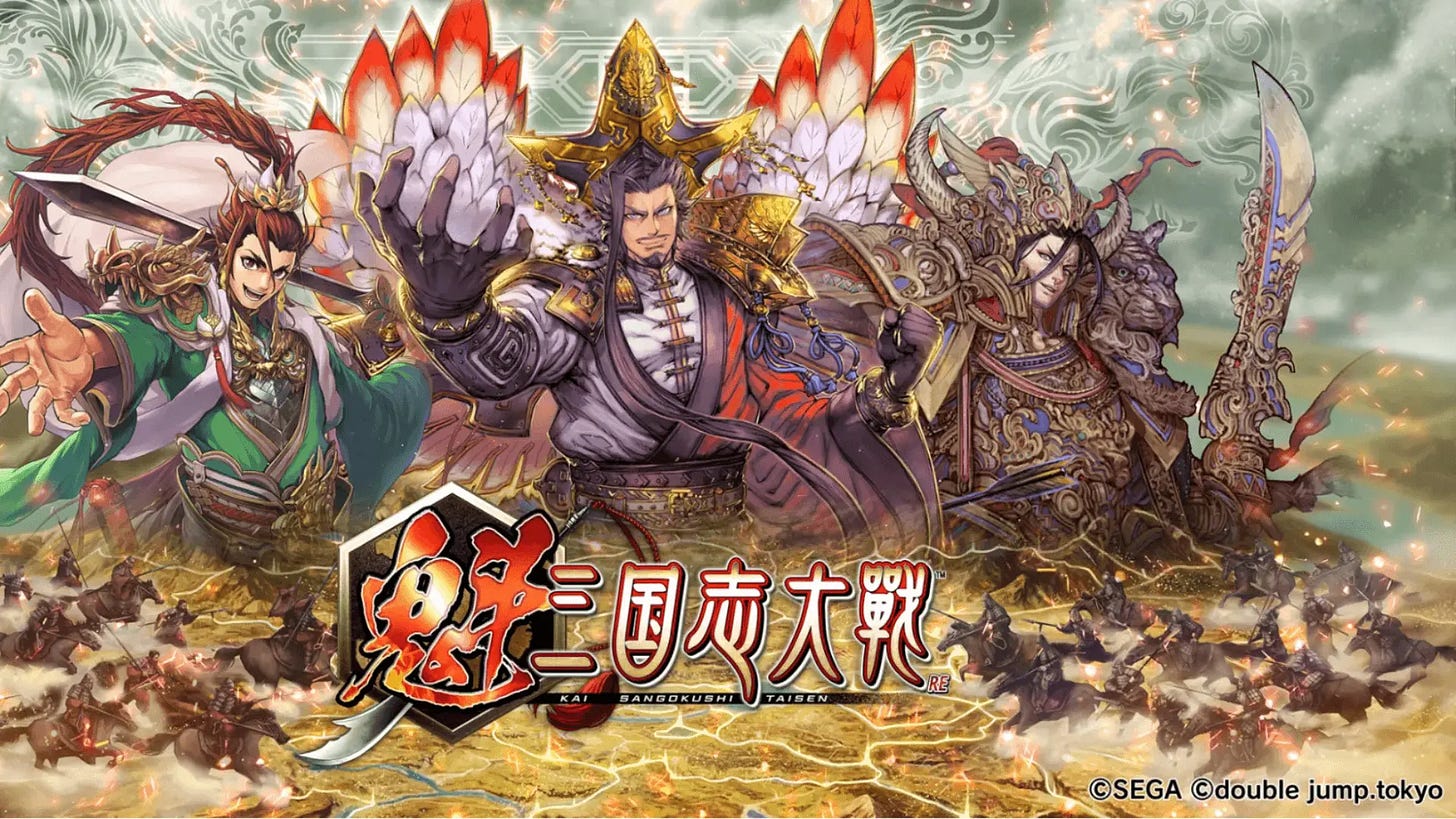Web3 Isn’t the Game. KAI: Battle of Three Kingdoms Gets That
This cycle feels different.
Unlike previous bull runs driven by retail FOMO and meme mania, this time it’s institutions quietly moving the pieces—especially in Web3 gaming. From Steam and Epic Games softening their stance on crypto titles, to giants like Sony, Nexon, and EA dipping into blockchain infrastructure, it feels like the whole industry is collectively holding its breath—waiting for someone big to make the first real move.
That move may have just happened.
Built on a classic Sega IP, developed by DoubleJump Tokyo, and running on Oasys, KAI: Battle of Three Kingdoms is setting a new tone for what Web3-native gaming could look like. The game’s token, $SGC, is slated for TGE on June 13, with listings across 10 major centralized exchanges, including Binance Launchpool and Binance Alpha.
In a space that’s been quiet for too long, this might be the spark people have been waiting for.
Classic IP—But What Kind of Game Is It?
Not every Web3 game launch comes with a SEGA-backed IP, a veteran Japanese studio, and $10 million in institutional funding. KAI: Battle of Three Kingdoms does—and that’s partly why it’s turning heads.
Built by double jump.tokyo, a studio that’s been working on blockchain games since 2018, KAI is a tactical card-based war game that draws from the cult classic Sangokushi Taisen, one of SEGA’s most recognizable arcade-era franchises. But this isn’t a reboot. It’s a full rebuild—modernized for mobile and PC, with a mix of legacy generals and newly illustrated characters, some of which exist as NFTs.
Gameplay is intentionally slow and strategic. You assemble squads of Three Kingdoms generals, arrange their formation, and then let them auto-battle over three rounds. The key isn’t how fast you tap—it’s how well you plan. The goal? Take over cities on a shared map in a persistent player-versus-player world.
KAI quietly launched in April across iOS, Android, and browsers, supporting Japanese, English, and Traditional Chinese. Despite little mainstream noise, it passed 1 million pre-registrations, largely fueled by loyal fans of the original IP—and a growing crowd of strategy gamers looking for depth without the grind.
And now, KAI is set to go live on 10 exchanges on June 13—including 8 CEXs like Binance Alpha, KuCoin, and Gate.io, plus 2 DEXs, PancakeSwap and Gaming DEX—turning quiet curiosity into something much harder to ignore.
Web3 Isn’t the Feature—It’s the Engine
KAI doesn’t lead with its Web3 features—but once you start playing, they’re there, running quietly in the background. Like an engine, you don’t see it on the surface, but it’s doing the work that keeps everything moving. And that’s entirely intentional.
As the team puts it in their litepaper:
“We must also acknowledge an implied risk: in some cases, simply playing for fun's sake—the very essence of gaming—stands to take second stage. And that is why we have sworn to hold ourselves to this basic tenet: Gamers First.”
At the center of the system is $SGC, the game’s native utility token. It’s not a governance token or a speculative asset meant to moon on launch day. Instead, $SGC is used to facilitate in-game actions: upgrading heroes, refining equipment, participating in raffles for limited items, and engaging in economic loops like NFT synthesis or trading. It behaves more like in-game currency with liquidity than a financial product.
Character NFTs—especially the “Awakened” generals—add another layer. Players can deploy them in battles, level them up, and even combine duplicates through a burn mechanism to unlock stronger versions. The system mirrors traditional gacha upgrade mechanics, but with real asset ownership layered on top. It's familiar to RPG players, but with added flexibility: you can trade what you no longer use.
Importantly, these Web3 components aren’t required to enjoy or progress in the game. You can build your team, compete, and even win without ever touching a wallet. But for players who want to go deeper—into the trading market, or into speculative strategy around asset value—those options are present, and well-integrated.
Rather than making Web3 the core loop, KAI treats it like an invisible infrastructure layer—powering ownership, fueling economic flow, and enabling player choice without disrupting the gameplay itself.
Like many Japanese game studios, they don’t talk about “revolution.”
They just build things—with quiet, deliberate engineering that makes sense.
The Token Trap: Hype Can Burn You
In Web3 games, tokens often enter too early—and too loudly.
Projects promise utility, value, “alignment,” and economy-first design, but what actually happens is familiar: players rush in, speculators inflate the price, and when the numbers fall, so does everything else—community, trust, and most of all, the game itself.
The tragedy isn’t the crash. It’s that tokens were made the main attraction before the game even had a chance to speak for itself.
KAI: Battle of Three Kingdoms doesn’t pretend this risk doesn’t exist. On the contrary, its team has taken deliberate steps to keep the token in the background—until the time is right. In their words:
“What we value most is the power of tokens to build connections.”
Too often, play-to-earn tokens have forced games to stake their entire credibility on the illusion of a rising chart. But maybe what the industry needs isn't another in-game currency masquerading as a product— It needs tokens that act as a bridge: connecting games with players, creators, and the broader ecosystem in ways that feel earned, not extracted.
In KAI’s design, tokens aren’t here to replace the game loop—they’re introduced after the loop is working. Once players have experienced the core battles, hero building, and alliance warfare, tokens start to add something new: depth to economic choices, incentives for collaboration, and meaningful friction between rival groups.
It’s a post-game layer, not a shortcut to engagement.
Even more compelling is how they frame the goal of tokenization: not yield farming or liquidity events—but “connections.” Not just transactions, but relationships: mentorships between veterans and newcomers, rivalries that push both sides to grow, shared victories that mean more because someone else cared.
In a space where most token economies focus on extracting value, KAI is aiming to circulate meaning—not just money.
That restraint may not grab headlines. But it might protect the game from the thing that has killed so many promising titles before it: their own token.
Right Ingredients, But the Dish Still Needs Time
Web3 gaming didn’t start with strategy. It started with speculation.
In the first wave, tokens were the product. “Play-to-earn” promised frictionless value, but most of what launched were thin loops wrapped around unsustainable economics. Games weren’t designed to be played; they were designed to be farmed. And when the numbers stopped going up, players stopped showing up.
Now, something is shifting.
The last year has seen a quiet pivot. Fewer pitch decks, more live games. Fewer buzzwords, more studios. Giants like Nexon, Ubisoft, Krafton, and Square Enix are no longer just observing—they're building. And they’re doing it differently. They’re slower. More measured. And they’re not betting the future on tokens alone.
Projects like KAI: Battle of Three Kingdoms are early examples of this transition. Built on a classic IP. Developed by an experienced team. Funded by long-term partners. There’s no rush to capture the next 10x. There’s patience—to grow, to tune, and to see if Web3 can serve not as a mechanic, but as a channel.
Because the real opportunity isn’t just technical. It’s cultural.
Web3 doesn’t need to reinvent gameplay to matter. What it can offer—if used thoughtfully—is a new kind of connective tissue between developers and players, between content creators and economies, between in-game identity and broader community. Not just guilds and DAOs, but real shared ownership of meaning, culture, and contribution.
That takes time. And not every game will get there.
But some, like KAI, are at least cooking with the right ingredients.
About Gaming Deep
The fusion of web3 and gaming is inevitable. Web3 gaming is poised to revolutionize game development, distribution, culture, and economic structures. Believing this shift, CARV introduces Gaming Deep, a series dedicated to exploring the latest advancements in Web3 gaming. Our mission is to uncover the social significance and financial potential of these developments, providing readers with early insights into industry trends and major milestones. Staying informed about these changes is crucial for gamers, developers, and enthusiasts alike. By understanding the evolving landscape, you can better navigate and capitalize on emerging opportunities within the gaming ecosystem.







